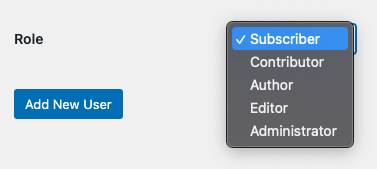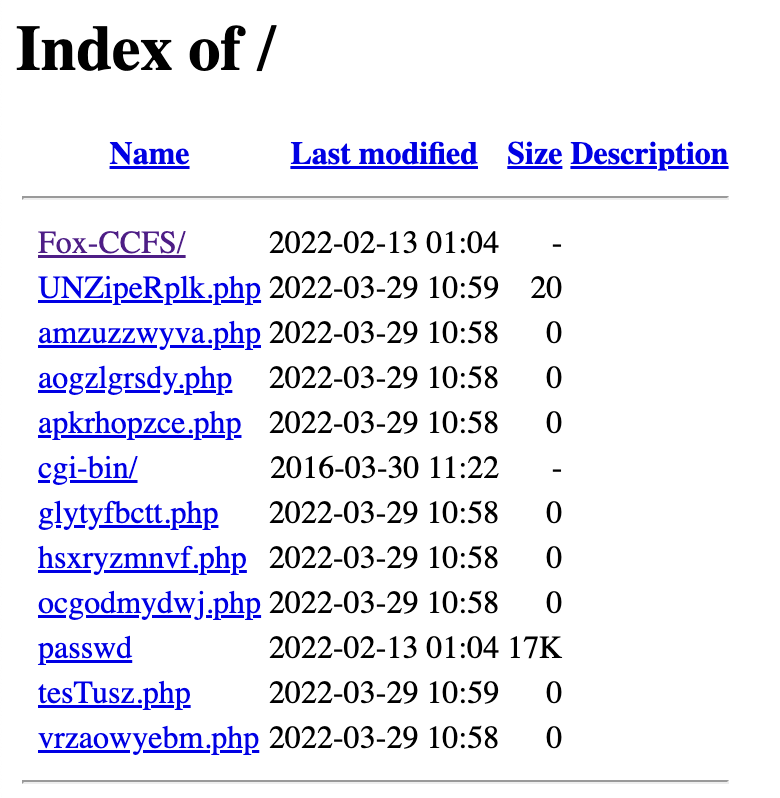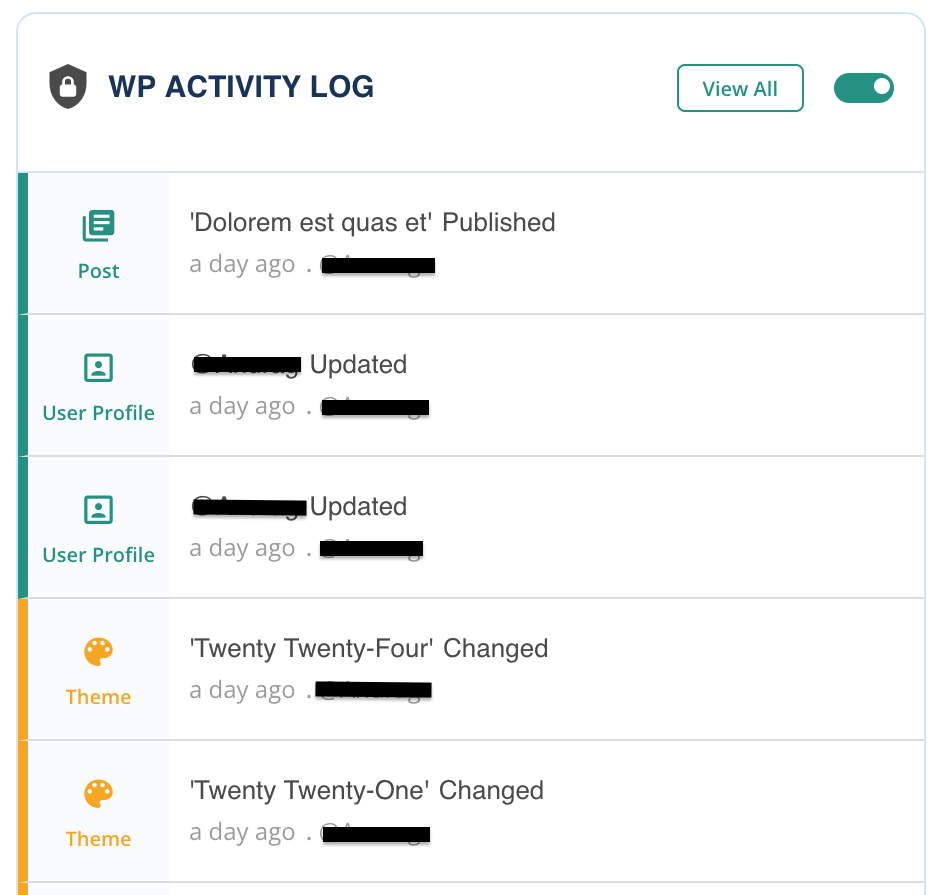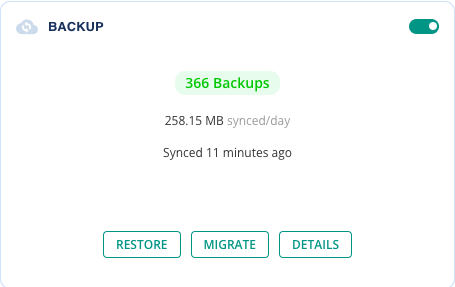What is WordPress Privilege Escalation?
by
7-layers of Security for Your WordPress Site
Your website needs the most comprehensive security to protect it from the constant attacks it faces everyday.

Imagine logging into your WordPress site and finding unexpected changes, unfamiliar user accounts with admin privileges, or even spam content and pages.
This isn’t just a nightmare scenario—it’s a real threat called privilege escalation.
Someone has gained unauthorized access to your site. They can manipulate your site’s data, install malware, or even lock you out of your own website.
In this article, we’ll explore what privilege escalation is, uncover how it manifests in WordPress, and provide actionable strategies to protect your site.
TL;DR: Unexplained changes like unidentified users, unknown software, etc. on your WordPress site could be a sign of privilege escalation, a critical security breach where attackers gain unauthorized access. To fight the hack and protect your site, install MalCare and scan your site immediately.
What is privilege escalation in WordPress?
In WordPress, “privilege” refers to the permissions or capabilities that a user account has. Think of it as what your users can and cannot do on your site. These privileges are tied to user roles like Administrator, Editor, or Subscriber. For instance, an Administrator can manage plugins and settings, while an Editor can only manage and publish content.
Now, privilege escalation happens when someone ends up with more permissions than they should have. Imagine your Editor suddenly can do everything an Administrator does! This jump in permissions can occur due to coding errors, vulnerabilities in plugins or themes, or just plain old configuration mistakes.
Hackers love to exploit this. By performing privilege escalation attacks, they gain admin rights to your site. With these elevated privileges, they can access sensitive information, mess with your content, install malicious software, and, in the worst-case scenario, take over your entire site.
This makes stopping privilege escalation attacks a crucial part of keeping your WordPress site secure.
How does privilege escalation occur?
You may be wondering, how exactly does privilege escalation happen on a WordPress site? Well, there are several ways this can occur, often through vulnerabilities or misconfigurations. Let’s break it down:
Vulnerabilities in plugins and themes
One of the common ways privilege escalation happens is through vulnerabilities in plugins and themes. If you’re not keeping your plugins and themes up to date, older, vulnerable versions can be a doorway for hackers to exploit and gain higher privileges. Recently, the User Registration plugin had a privilege escalation vulnerability that put over 70,000 sites at risk. MalCare’s firewall-protected sites from hackers trying to exploit the vulnerability.
Using nulled plugins and themes
If you’ve installed nulled software, you’re more likely to have malicious code embedded in it. Attackers can use this code to implant backdoors, granting them covert access to your site. This could result in data breaches, data loss, or even a complete site takeover. They can also spread malware throughout your site, corrupting its various components.
Breaking authentication mechanisms
Another method hackers use is breaking authentication mechanisms. They do this through user enumeration or phishing attacks. User enumeration involves identifying valid usernames on a site, which hackers can then target for brute force or other types of attacks. Phishing attacks involve tricking users into providing their login credentials through deceptive emails or sites. Hackers can then use these credentials to gain access to higher-privilege accounts.
SQL injection (SQLi) and cross-site scripting (XSS) attacks
Hackers also employ SQL injection and XSS attacks to escalate privileges. When your site has weak input validation, i.e. it doesn’t properly check user input, hackers can inject malicious SQL or scripts to manipulate the database or hijack user sessions. Simplified or unsecured access to the database can also make it easy for attackers to execute privileged operations.
Misconfigured user roles and permissions
Misconfigurations in user roles and permissions are another way privilege escalation can occur. If user roles are assigned incorrectly, like assigning an Editor role to someone who should only be a Subscriber, users might get more privileges than they need.
Assigning too broad permissions to user roles can also open up opportunities for abuse or exploitation. For example, the Contributor role has standard privileges that can’t be customized by default. However, if a Contributor is granted the ability to manage plugins, it exposes the site to potential misuse or exploitation.

Direct access to WordPress files
Lastly, direct access to the WordPress files through file indexing can lead to privilege escalation by exposing sensitive files. Consequently, disabling file indexing is a must to protect against unauthorized access.

How to identify privilege escalation attacks?
Let’s face it. Keeping an eye on potential privilege escalation attacks can feel overwhelming, but it’s absolutely essential for maintaining your site’s security. Here’s how you can spot the red flags:
Unexpected changes in settings
Have you ever logged into your WordPress dashboard and noticed that some settings have changed without your knowledge? Did you check your site’s activity logs to find users and entries that you have absolutely no idea about? These are major warning signs!
If site configurations or plugins are suddenly altered and you can’t recall making these changes, it’s time to investigate. These unexpected changes can indicate that someone with higher privileges than they should have is tinkering with your site.
New and unknown user accounts
Finding new user accounts that you didn’t create? That’s definitely suspicious. Check your user list regularly. If new users, especially those with elevated roles like Admin or Editor, are popping up without your approval, a hacker may have created these accounts to gain higher privileges.

Unauthorized content changes
Imagine logging in to find that posts or pages have been modified, or even worse, new content that you didn’t approve has appeared. Or waking up to a site that is defaced beyond recognition. Unauthorized content changes are a strong indicator that someone has more control over your site than they should. Keep an eye out for changes in published content, new posts, or modified media files that you don’t recognize.
Suspicious activity in activity logs
Most of the time, your first clue will come from your activity logs. If you’re using MalCare, you have access to detailed activity logs. Regularly review these logs for unusual activity, such as multiple failed login attempts, unexpected role changes, or unfamiliar IP addresses. Suspicious actions recorded in these logs can reveal indicators of an ongoing or attempted privilege escalation attack.

How to fix privilege escalation attacks?
If you suspect your WordPress site has fallen victim to a privilege escalation attack, it’s crucial to act swiftly to minimize damage and restore security. Here’s a step-by-step guide to responding effectively:
Temporarily take down your website
First and foremost, take down your website temporarily to prevent further unauthorized access and damage. In the meantime, redirect visitors to a maintenance page to keep them informed and protect your site while you address the issue.

Scan the website using MalCare
Next, perform a thorough scan of your website using a reliable security tool like MalCare. This will help you identify any malicious code, malware, or suspicious activity. MalCare’s robust scanning and cleaning services are tailored for WordPress sites and can clean even the most stubborn malware.

Reset all passwords
Immediately reset all admin and user passwords and inform everyone about this change. Ensure that all user accounts, especially those with higher privileges, have strong and unique passwords. This step is crucial to prevent attackers from reusing compromised credentials.

Audit users
Conduct a complete audit of user accounts on your site. Remove any accounts that look suspicious or were created without your knowledge. Ensure that the roles and permissions for legitimate users are appropriate.
Remove suspected plugins or themes
Uninstall any suspicious plugins or themes you think might have been the entry point for the attack. You can identify them by whether they were installed without your knowledge, if their names are doubtful, etc. Sometimes it’s necessary to sacrifice functionality temporarily for the sake of security. Ensure these components are thoroughly checked for vulnerabilities before considering reinstallation.
Reset site salts and security keys
Reset your site’s salts and security keys to add an extra layer of security by invalidating existing sessions and cookies. MalCare offers this as part of its post-hack cleanup services, making it easier to secure your site’s authentication data.

Update core, plugins, and themes
Ensure your WordPress core, plugins, and themes are up to date. Vulnerabilities in older versions can be a common entry point for attacks. Regular updates are essential to patch security gaps and protect your site against threats. If you are a MalCare user, you can use features such as staging sites and automatic backups that make your update process safer and smoother.
Implement 2FA or CAPTCHA
Add two-factor authentication (2FA) or CAPTCHA to your login process, if you haven’t done so already. These security measures significantly reduce the risk of unauthorized access by adding another hurdle for attackers to overcome.

Monitor the site
Finally, keep a close eye on your site for some time after the attack. Regular security scans and activity monitoring will help you detect any new suspicious activity early, allowing you to respond promptly if needed.
What are the consequences of privilege escalation attacks?
Privilege escalation attacks can have devastating effects on your WordPress site. When someone gains unauthorized higher privileges, the repercussions can be severe. Here’s what you need to be aware of:
Unauthorized admin access
One of the first things hackers aim for is unauthorized admin access. With admin privileges, they can change site settings, leading to misconfigurations or even site downtime. Imagine waking up to find your site completely offline or behaving strangely because a hacker has changed critical settings like user permissions, directory locations, etc. This downtime can be a nightmare for both you and your clients.
Data theft
Hackers with admin access can easily steal sensitive information from your site. This can include user data, financial records, and other confidential information stored on your website. Such data breaches can have severe legal and financial implications.
Content and file modification
Once a hacker has escalated their privileges, they can change, add, or delete your site’s content and files. This isn’t just frustrating—it can also destroy your site’s integrity. Imagine finding inappropriate or fraudulent content on your site, or worse, seeing important files disappear.
Malware installation
With higher privileges, hackers can install malware on your site. This malware can infect your visitors, steal their information, or even hijack their systems. It’s not just a risk for your site but also a danger to everyone who visits it.
Site defacement
Hackers can deface your site, altering its appearance to display offensive or harmful content. Site defacement is not only embarrassing but also damaging to your brand’s reputation. It conveys a lack of security and can drive visitors away permanently.
SEO impact and Google blacklisting
A privilege escalation attack can seriously impact your SEO. If your site is compromised, search engines like Google might blacklist it to protect users. This leads to a significant drop in organic traffic as your site becomes almost invisible in search results. Recovering from such a blacklisting can be time-consuming and costly.
Loss of user trust, traffic, and revenue
All these issues culminate in a massive blow to user trust. Visitors will be less likely to return to a site that’s been compromised. As your traffic dwindles, so does your revenue. The direct and indirect costs of a privilege escalation attack can be substantial, affecting not just your site’s security but also its profitability.
How to protect your WordPress site from privilege escalation attacks?
Preventing privilege escalation attacks is critical to maintaining the security and integrity of your WordPress site. By implementing a few proactive measures, you can significantly reduce the risk of such attacks.
Use MalCare
One of the easiest ways to bolster your site’s security is by using a reliable security plugin like MalCare. MalCare provides comprehensive website security features such as malware scanning and cleaning, firewall protection, and bot protection. MalCare can also help you detect and address vulnerabilities before they are exploited.

Regularly update your WordPress core, plugins, and themes
Keeping your WordPress core, plugins, and themes updated is essential. Updates often include security patches that address known vulnerabilities. By staying current, you minimize the chances of attackers exploiting outdated software to escalate privileges.
Get plugins and themes from reputable sources only
Always download plugins and themes from reputable sources. Avoid nulled versions, as they often contain hidden malicious code. Stick to official repositories like the WordPress Plugin Directory or trusted marketplaces to ensure you are using secure and reliable software.
Employ strong password policies and 2FA
Implementing strong password policies is a crucial step in securing user accounts. Make sure that your users use complex passwords that combine letters, numbers, and special characters. Additionally, enable Two-Factor Authentication (2FA) to add an extra layer of security. 2FA ensures that even if a password is compromised, unauthorized access is still prevented by an additional verification step.
Regularly audit user roles and permissions
Conduct regular audits of user roles and permissions on your site. Make sure that users only have the access they need to perform their tasks. Remove or restrict any unnecessary privileges. This practice limits the damage that can be done if a user account is compromised.
Take regular backups
Regular backups are your safety net in case of an attack. Ensure that you have a reliable backup solution in place and create backups frequently. Store them securely, away from your main site. In the event of a privilege escalation attack, having recent backups will allow you to restore your site to a safe state quickly. If you are a MalCare user, you get backups that are stored safely off-site and can be retrieved in just one click.

Final thoughts
While WordPress privilege escalation might seem like a daunting security issue, understanding its mechanics can significantly help you fortify your site’s defense against potential cyber threats. Hence, implementing the preventative measures discussed, such as timely updates and stringent user role audits, can help you secure your site from unauthorized access.
Additionally, investing in a reliable security solution like MalCare can provide further peace of mind by automating many critical security tasks, including monitoring and immediate threat mitigation. Remember, the safety of your WordPress site not only protects your content and user data but also preserves your online reputation and trustworthiness.
FAQs
What is privilege escalation in WordPress?
Privilege escalation occurs when a user in WordPress gains access to capabilities and permissions beyond those allocated to their user role. This can lead to unauthorized actions and control over the website.
How does privilege escalation happen in WordPress?
Privilege escalation can occur through various vulnerabilities such as flaws in plugins or themes, misconfigurations in user permissions, or external attacks like SQL injections and phishing that exploit weaknesses in the website’s security.
What are the common signs of a privilege escalation attack?
Look out for unexpected changes to website settings, the presence of unknown user accounts, unauthorized changes to content, and unusual activity in the website’s logs.
Why is privilege escalation considered a serious security threat?
Privilege escalation can grant attackers unauthorized access to sensitive areas of a website, allowing them to steal data, modify content, inject malware, and potentially take complete control of the website.
How can I protect my WordPress site from privilege escalation attacks?
To protect your WordPress site, use security plugins like MalCare, regularly update your WordPress core, plugins, and themes, only get plugins and themes from reputable sources, employ strong password policies and 2FA, regularly audit user roles and permissions, and take regular backups.
Category:
Share it:
You may also like

10 Website Hacks and How to Prevent Them
Are you aware of how vulnerable your website might be right now? Every 39 seconds, a new cyber attack occurs, with hackers wreaking havoc on thousands of sites every day….

What is SEO Poisoning and How to Prevent It?
Have you ever searched for something online, and clicked a seemingly legitimate link, only to end up on a sketchy, irrelevant site? If so, you might have encountered SEO poisoning—a…

What are Social Engineering Attacks and How to Prevent Them?
The weakest link in your website’s security is… you! And other users as well, but mainly you. Don’t believe us? Here’s a compelling stat: a staggering 74% of all data…
How can we help you?
If you’re worried that your website has been hacked, MalCare can help you quickly fix the issue and secure your site to prevent future hacks.

My site is hacked – Help me clean it
Clean your site with MalCare’s AntiVirus solution within minutes. It will remove all malware from your complete site. Guaranteed.

Secure my WordPress Site from hackers
MalCare’s 7-Layer Security Offers Complete Protection for Your Website. 300,000+ Websites Trust MalCare for Total Defence from Attacks.








